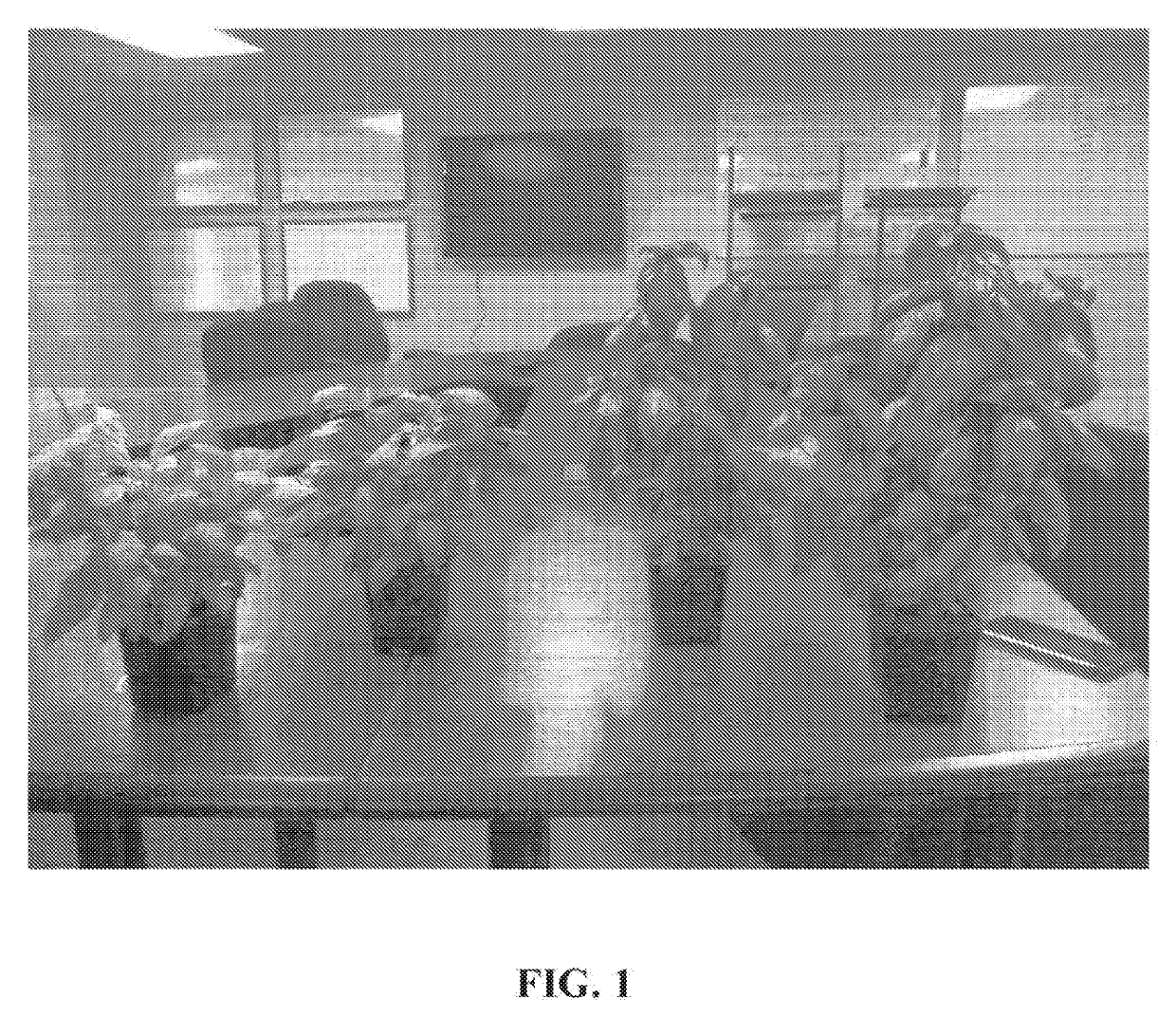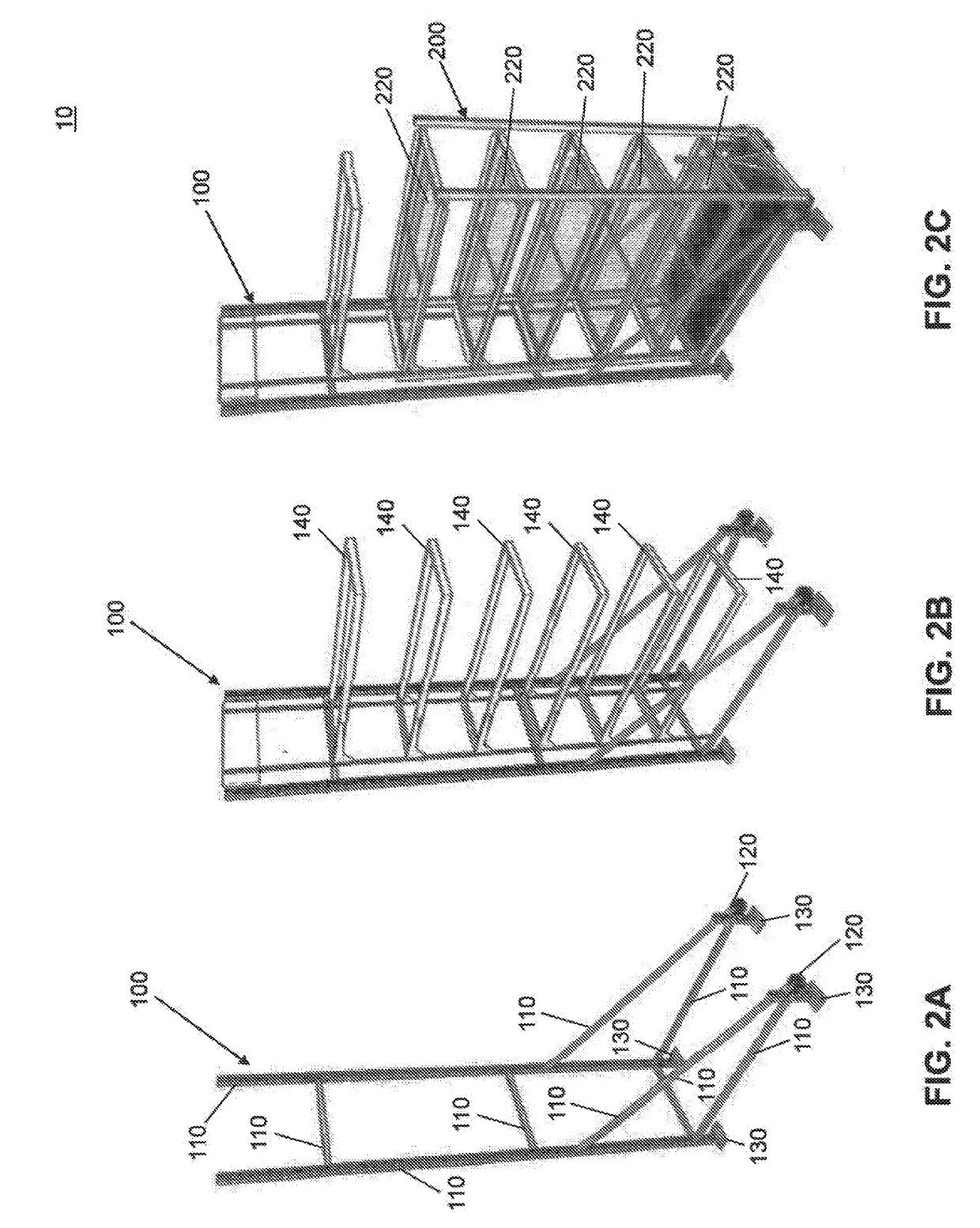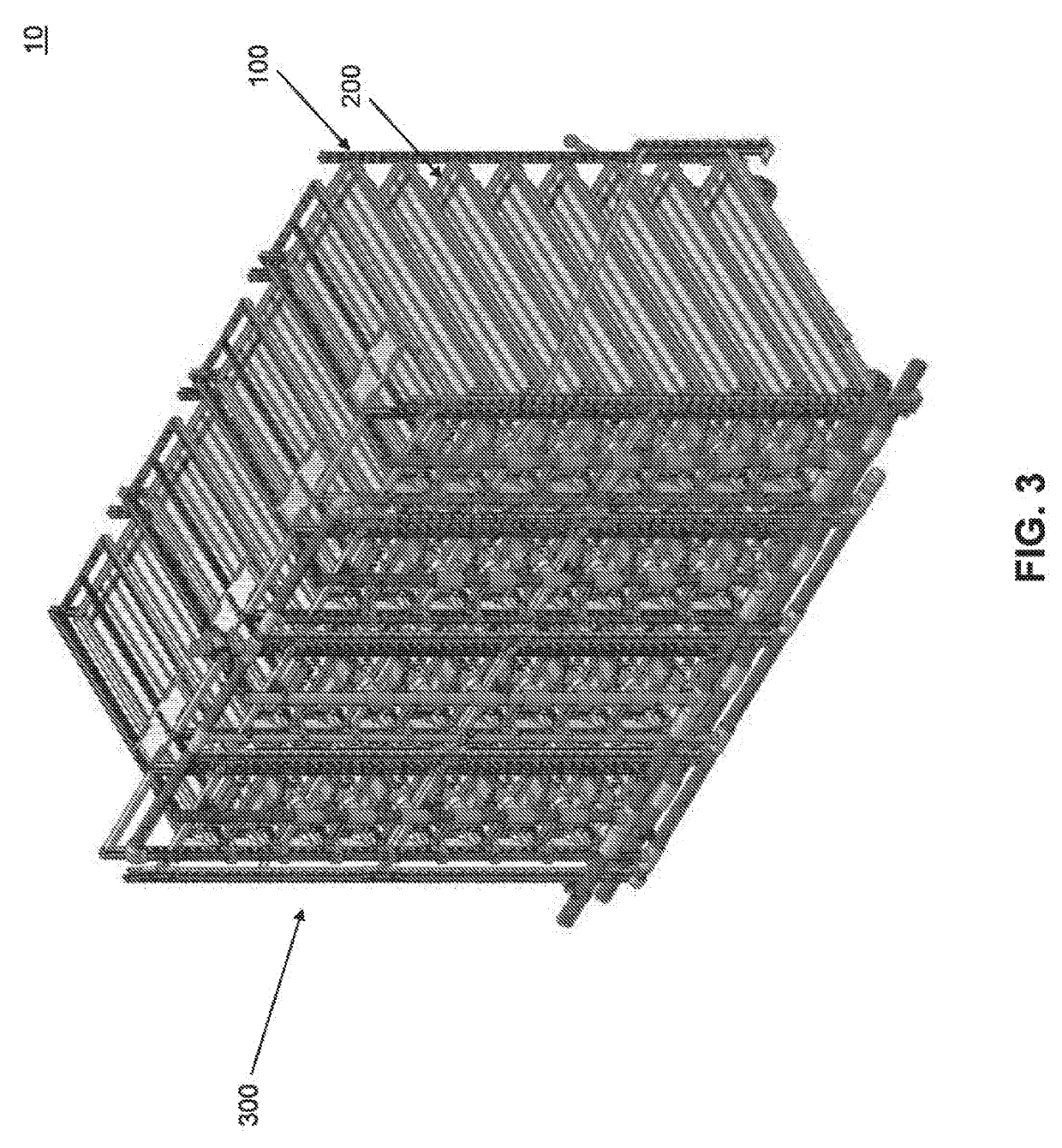Methods and Systems for Growing Plants
a technology applied in the field of growing methods and systems, can solve the problems of increasing the chances of cold damage, reducing the efficiency of the growing method, and reducing the number of harvests
- Summary
- Abstract
- Description
- Claims
- Application Information
AI Technical Summary
Benefits of technology
Problems solved by technology
Method used
Image
Examples
examples
[0065]FIG. 1 shows a representative comparison between two basil plants on the left that have not been finished with the claimed methods or systems and two basil plants on the right that have been finished with the claimed methods or systems. The plants produced with these methods or systems exhibit a stronger, darker green color. As shown in the figure, stem thickness, height, leaf shape and surface area, are shown to have dramatically increased. Qualitatively, these plants exhibit increased flavor. Other improvements observed include thicker and darker green leaves, thicker and stronger stems, increased aromatics, increased cold resistivity, better shelf life, and decreased product shrinkage.
[0066]Stem height and thickness / width tests were conducted over three trials, with three treated plants and three untreated plants used in each trial. The test results addressed the comparison of three plants harvested from the greenhouse as normal (without treatment) and three plants harveste...
PUM
 Login to View More
Login to View More Abstract
Description
Claims
Application Information
 Login to View More
Login to View More - R&D
- Intellectual Property
- Life Sciences
- Materials
- Tech Scout
- Unparalleled Data Quality
- Higher Quality Content
- 60% Fewer Hallucinations
Browse by: Latest US Patents, China's latest patents, Technical Efficacy Thesaurus, Application Domain, Technology Topic, Popular Technical Reports.
© 2025 PatSnap. All rights reserved.Legal|Privacy policy|Modern Slavery Act Transparency Statement|Sitemap|About US| Contact US: help@patsnap.com



